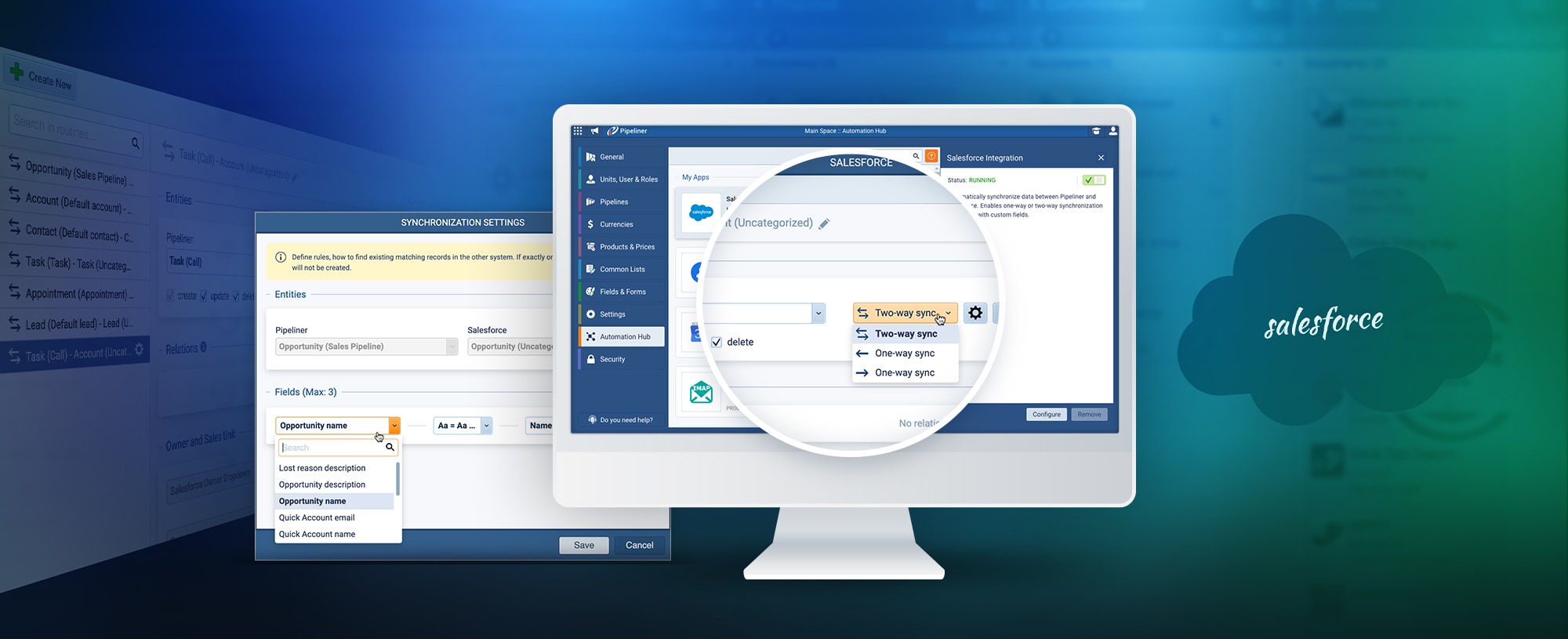More and more people are working remotely across the globe.
It’s hardly surprising; spurred on by the obvious freedoms it brings to our working lives, ever-increasing numbers of us are going office-free.
Yet, this big shift in how we work, while positive for so many of us, is proving a challenge for companies and their managers.
According to research conducted by Stanford University in 2023, remote workers believed their productivity was 7% higher than when in an office, yet managers believed it was 3.5% lower.
Unfortunately, the managers appear to be right. Stanford’s analysis of multiple studies found that the productivity of remote workers could drop by 10% to 20% compared to on-site employees.
So, managing a team of remote employees and ensuring they deliver the required results sounds like it may be a challenge.
Imagine, for instance, managing a remote sales team; it’s not like leading a mild-mannered, remote software deployment team rolling out, say, AI accounting software to streamline a company’s financing.
Instead, we’re talking about a group of people with competitive personalities tasked with constantly performing under high pressure—and without traditional in-person contact.
Leading a remote sales team successfully so that everyone hits those sales targets can have challenges. This article will explore 8 tips to overcome those challenges and successfully manage your remote sales team.

1. Recruit the right team members
You can make your job markedly easier from the off by recruiting the right personnel.
The trick here is to be rigorous in your applicant screening and thorough in your interviewing.
For example, only add to the team when it’s truly necessary, and bring in one or two new faces who’ll fit and mix well with pre-existing members, rather than going on a risky mass recruiting spree.
2. Build trust and establish accountability
Your team will benefit from members who are receptive to the clear expectations you give them at the start.
They should accept that, while remote working affords them a certain level of autonomy compared to working on a bustling sales floor, with that comes increased responsibility and accountability.
You must be able to trust them, and that means they must be able to trust you, too. Such trust is established initially by setting clear KPIs, unambiguous goals, daily/ weekly work expectations, and blocked-off communication sessions.
Project management platforms like a hardware and software development tool or time tracking software will help ensure everyone is accountable for their individual tasks to help reach wider goals. But make sure the team has a high degree of autonomy rather than using these tools to micromanage – which leads us onto the next point.
3. Resist the temptation to micromanage
If you’ve hired right, via effective applicant pooling, screening, and interviewing, you should be confident enough to let your recruits off the leash.
That is, you should have hired hungry, motivated salespeople who are eager to work independently, yet collaborate in a team when appropriate.
At this point, you must step back—resist the temptation of micromanaging.
Make it clear you’re there to be contacted whenever necessary, reassure and encourage your team, and, of course, underline that you’re the manager.
But don’t get in the way and meddle—that’s the fastest way to undermine trust and undo employee accountability.

4. Deploy the right CRM
If your tech’s not up to scratch, you simply won’t be able to manage a remote sales team.
Indeed, you may have put together an exciting, ambitious group of young salespeople via the best campus recruiting software but, without the right CRM or apps, you’re taking on more work than you need to.
So, it’s a good idea for your team to use a comprehensive customerCustomer Customer is an individual or an organization that purchases a product or signs up for a service offered by a business. relationship management platform (CRM).
That means a CRM that delivers superior functionality, including excellent CRM integration, thereby enabling every team member to keep up with others’ activities and performance.
The right CRM should enable transparent sharing of sales dataData Data is a set of quantitative and qualitative facts that can be used as reference or inputs for computations, analyses, descriptions, predictions, reasoning and planning., aiding the smooth running of day-to-day work. Market leaders such as HubSpot or Salesforce are ideal for this.” Our text” Beyond CRM, businesses managing remote sales teams should also focus on efficient backend operations, including order processing and logistics. Utilizing reliable ecommerce fulfillment services ensures that products reach customers on time, reducing friction in the sales processSales Process Sales Process is a series of strategic steps or a set of activities aimed at driving sales growth through the alignment of personnel, market insight, methodologies, relevant business units, and technology..
5. Use the best communication tools
Daily work processes can be streamlined, inefficiencies ironed out, and silo-working eradicated by deploying reliable communication/ organizationOrganization Organization is a cohesive group of people working together and formally bound by a shared identity (e.g., one team, company, club, etc.) and a common purpose (e.g., business growth, athletic victory, etc.). tools.
For instance, so long as they seamlessly integrate with your CRM, Slack is perfect for internal team communication, Trello or Asana for managing projects and tasks, and Google Meet or Zoom for video conferencingVideo Conferencing Video Conferencing refers to the technology behind or the act of establishing a visual connection between two or more people positioned in different locations to facilitate remote communication..
Additionally, consider incorporating a collaborative online spreadsheet like Google Sheets or Microsoft Excel Online. These tools can enhance real-time collaboration on data analysis, pipelinePipeline Sales pipelineis a visual representation of the stage prospects are in the sales process. tracking, and sales forecastingForecasting Forecasting is a prediction or calculation of a trend or event likely to occur in the future based on qualitative, quantitative and historical data as well as emergent but relevant factors., providing your remote sales team with a centralized platform for efficient data management and decision-making.

6. Maintain excellent communication processes
When they’re effective, remote-working relationships are driven by open and candid communication.
Unfortunately, it’s all too easy for your team to miss or not pick up on important details because easy in-office communication isn’t an option.
Indeed, discussing the best sales methodologies via an impromptu face-to-face chat or casually updating a co-worker at the watercooler just isn’t possible. So, how can you make sure remote-based communication works?
- Establish regular check-ins—insist on daily/ weekly check-ins so team members stay in the loop on all news, developments, and challenges that are appropriate for them to share or know about.
- Promote honesty and directness. Non–in–person communication requires effort to establish personal connections, good rapport, and the ability to pick up on cues and voice inflections.
Recognizing the unique challenges of remote communication, it is essential to not only maintain but improve our communication channels. Regular, structured check-ins and the intelligent use of technology are essential. We must leverage tools like video conferencing not just for operational needs, but to foster a sense of community and connection among team members. Ensuring that every team member has the opportunity to be heard and to share crucial insights allows us to mimic the spontaneous interactions of an in-office environment, maintaining the team’s dynamism and responsiveness, no matter the physical distance. ” Explains Marcus Gullberg, Creator of Feedbucket, one of the best website feedback tool.”
This means not assuming anyone’s been instantly understood, so foster clear and honest communication and give colleagues the confidence to speak their minds.
- Ensure information is accessible—can team members easily contact each other and communicate? Make sure their remote working culture facilitates this, while ensuring everyone has access to each other’s contact information and critical data via shared commission tracking tech.
- Take advantage of video conferencing—again, you won’t be sharing a high-energy sales floor with your team, so be organized and make the most of video comms.
Video conferencing is useful for everything from team meetings to one-on-ones; reviewing deals to sharing buyerBuyer A buyer is an individual or organizational entity that purchases a product or subscribes to a service. reactions; virtual coffee breaks to sales trainingSales Training Sales Training is the process of improving the skills, behavior and mindset of sales professionals to upgrade their selling performance. sessions; and employee feedback to virtual team building.

7. Be clear on KPIs and set realistic goals
As noted, successfully managing a sales team also hinges on abiding by appropriate key performance indicators (KPIs).
Without the right KPIs, a manager will struggle to assess team members’ progress and the team’s progress, overall.
KPIs can certainly vary from sales team to sales team, of course, depending on the products/ services sold and the targets set by a company. However, common, effective KPIs used to track sales performance include conversionConversion Conversion is the process of turning a target consumer into a paying customer; or more generally, the point at which a user performs a specific action favorable to a marketer or a seller./ win rates, revenueRevenue Revenue is the amount of money a business generates during a specific period such as a year or a quarter; also called sales. generation, and hours spent on sales prospectingSales Prospecting Sales Prospecting is the process of finding, building and qualifying a pool of potential buyers or clients through networking, cold calling, advertising and other engagement methods..
Moreover, by setting realistic sales goals, team members can be motivated and held accountable for their performance. Striving to reach challenging yet achievable goals helps them to set priorities and brainstorm how to reach their objectives.
Plus, sales forecasting against targets becomes more precise and reliable when goals are realistic.
For example, say your company is in the North American parcel production arena. In that scenario, your team’s more likely to sell parcels to the best shipping companies in Canada when they’re pursuing ambitious yet pragmatic sales goals.
As part of setting realistic KPIs, it’s essential to track how effectively team members are allocating their time. An automated employee time clock app can provide detailed reports on work hours, enabling managers to align sales goals with time spent on key activities.
8. Celebrate wins and reward successes
Finally, celebrating and rewarding wins—big and small—is a great way to incentivize your team. It works because it lets them know their efforts are highly regarded.
For instance, say your company sells web domains and, following several calls with prospective clients pondering where to buy a domain name, a team member has converted them into sales. In which case, you might show appreciation by offering them a one-off reward like a gift card or a meal voucher.
If you haven’t the cash to splash on that, at the very least reward them with public recognition. It will likely enhance team motivation, reinforce that all-important sales mindset, and help retain your best personnel.
You could also try gamification to nurture in-team competition, while coming up with some morale-boosting sales activities to bring the team closer together.
Whatever you do, though, don’t dismiss this kind of ‘soft management’—it could make a big difference.
Closing thoughts: manage well and reap the rewards
Managing a remote sales team doesn’t need to be complicated.
The crucial starting point is hiring correctly. Be targeted and smart, adding members only when necessary to a well-functioning team.
If your team members are individually and collectively performing, and responding to your motivational and team-building techniques, your rewards, and lack of micromanaging—why upset the apple cart?
When it comes to tech, deploy a carefully selected CRM and other organization/ communication apps to make the team’s work easier.
Also, the best video conferencing tools can enhance regular one-on-one or team meetings, and everyone should be able to easily share data and resources.
By taking advantage of the most suitable tech and seeing the big picture (measuring performance against appropriate KPIs and setting challenging but practical goals), you should ensure your team succeeds at what it does best—turning leads into conversions and generating revenue for your company.





